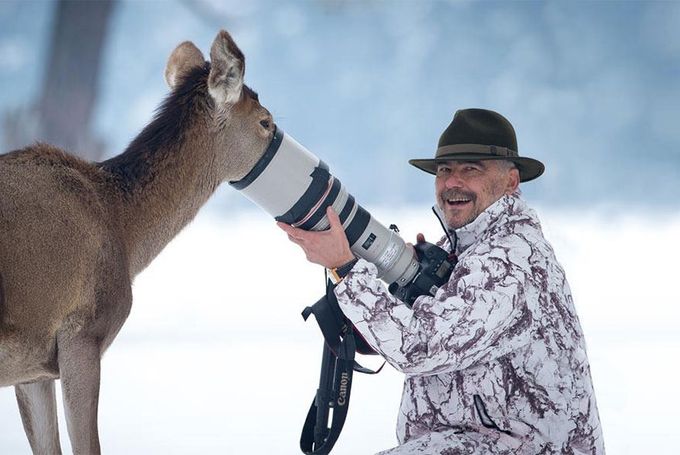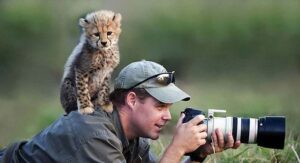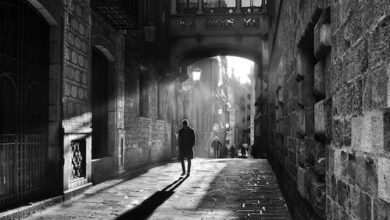Wildlife Photography Jobs: Capturing1 Nature’s Beauty

Wildlife photography Jobs is a dream job for many, blending passion for nature with the art of photography. This profession offers a gateway to explore the untamed beauty of the natural world while documenting its essence through the lens. However, beneath its captivating allure lie both promising opportunities and challenges that aspiring photographers should consider.
The Allure of Wildlife Photography Jobs
In the realm of photography careers, wildlife photography stands out as an adventure-filled path. It grants professionals a chance to immerse themselves in diverse ecosystems, capturing breathtaking moments of untamed creatures in their natural habitats. The thrill of capturing a lion’s majestic roar or a bird in graceful flight fuels the passion of wildlife photographers.

Positive Aspects
1. Connection with Nature:
Wildlife photographers enjoy a profound connection with nature, fostering a deep appreciation for biodiversity and conservation efforts.
2. Creativity Unleashed:
Each moment in the wild is unique, offering endless opportunities for creativity and innovation in capturing mesmerizing shots.
3. Storytelling through Imagery:
Photographs convey powerful stories. Wildlife photography allows individuals to narrate tales of survival, beauty, and the intricate balance of ecosystems through stunning images.
4. Contribution to Conservation:
The images captured by wildlife photographers often play a crucial role in raising awareness about endangered species and environmental issues, contributing significantly to conservation efforts.
5. Personal Fulfillment:
The satisfaction of freezing an elusive moment in the wild and sharing it with the world brings immense personal gratification.
Challenges in Pursuing Wildlife Photography Careers
Despite the enchantment surrounding wildlife photography, aspiring professionals encounter a set of challenges that demand resilience and determination to overcome.
Negative Aspects
1. Patience Testing:
Waiting for the perfect shot can consume hours, sometimes days, demanding immense patience and perseverance.
2. Financial Instability:
Initially, establishing oneself in this field can be financially challenging. Equipment costs, travel expenses, and unpredictable income streams pose significant hurdles.
3. Environmental Risks:
Venturing into the wild carries inherent risks, from encountering dangerous animals to navigating harsh weather conditions, necessitating caution and preparedness.
4. Ethical Dilemmas:
Balancing the desire for captivating shots with ethical considerations, such as disturbing wildlife or altering their natural behavior, can be a constant dilemma.
5. Competitive Industry:
The field of wildlife photography is highly competitive, requiring continuous skill development and networking to stand out among talented professionals.
Paths to Success in Wildlife Photography Careers
Overcoming the challenges and thriving in the realm of wildlife photography demands a blend of passion, skill, and strategic approaches.
Navigating Challenges
1. Skill Enhancement:
Constantly honing photography skills, understanding animal behavior, and mastering the use of specialized equipment are crucial for success.
2. Networking:
Building connections within the industry, collaborating with conservationists, and showcasing work through various platforms are vital for exposure and opportunities.
3. Adaptability and Resilience:
Being adaptable to changing environments, resilient in the face of setbacks, and continuously innovating are traits that pave the way for success.
4. Ethical Practices:
Upholding ethical standards and prioritizing the well-being of wildlife over capturing the perfect shot is integral for sustainable and responsible photography.
5. Diversification:
Exploring various niches within wildlife photography, such as macro photography or underwater shots, can broaden opportunities and diversify one’s portfolio.
Further Insights into Wildlife Photography Careers
Embracing the Adventure
Positive Reinforcements
Wildlife photography transcends mere profession; it’s a lifestyle embraced by individuals seeking exhilarating adventures. The thrill of exploring remote locations, witnessing rare species in their natural habitats, and experiencing the raw beauty of untouched landscapes is an unparalleled aspect of this career.
Challenges as Learning Opportunities
The challenges encountered in wildlife photography serve as invaluable lessons. Each hurdle, whether it’s the patience required for the perfect shot or financial constraints in procuring top-notch gear, molds individuals into resilient professionals capable of thriving in unpredictable environments.
Technical Expertise and Artistry
Technical Proficiency
Mastery of photography equipment is fundamental. Wildlife photographers often rely on specialized gear such as telephoto lenses, high-speed cameras, and camouflage to capture elusive moments without disturbing the natural flow of wildlife.
Artistic Vision
Beyond technical skills, cultivating a unique artistic vision is essential. It involves understanding light, composition, and storytelling to encapsulate the essence of wildlife in a single frame, evoking emotions and sparking conservation conversations through visual narratives.
Conservation and Impact
Advocacy through Imagery
Wildlife photographers wield immense power through their images. These visuals not only captivate audiences but also serve as potent tools for advocating conservation efforts. Their work can evoke emotions, urging individuals to take action towards preserving endangered species and fragile ecosystems.
Ethical Responsibilities
Maintaining ethical standards is pivotal. Respecting the boundaries of wildlife, refraining from disruptive practices, and prioritizing the welfare of animals over capturing a photograph underscore the ethical compass of a responsible wildlife photographer.
Diversification and Innovation
Exploring New Frontiers
Diversifying techniques and exploring uncharted territories within wildlife photography can open doors to unimagined opportunities. From experimenting with new technologies like drones for aerial perspectives to embracing different ecosystems and species, versatility fosters growth.
Innovation in Storytelling
Adapting to changing trends in visual storytelling amplifies the impact of wildlife photography. Leveraging social media, creating multimedia content, or collaborating with scientists and journalists can revolutionize how stories about wildlife are shared and consumed.
Conclusion
wildlife photography presents an enticing yet challenging career path. The blend of adventure, creativity, and a deep connection with nature makes it a fulfilling profession for those willing to navigate its hurdles with passion and dedication. Balancing the awe-inspiring moments captured with the responsibility towards wildlife preservation is the essence of a successful wildlife photographer’s journey.




